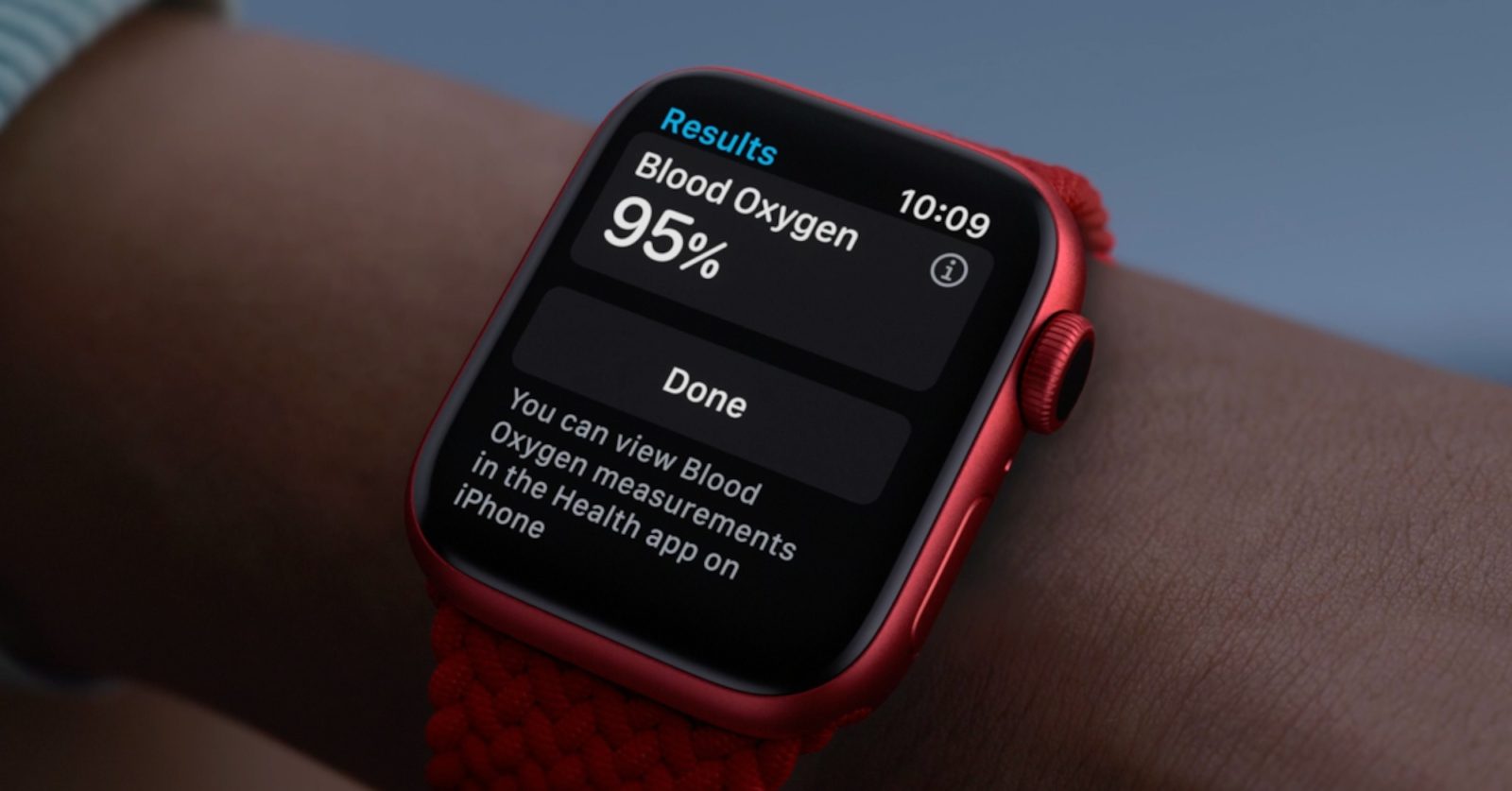
A new validation study published this month puts the blood oxygen feature of the Apple Watch to the test. According to the results of the study, the Apple Watch Series 6 is able to “reliably detect states of reduced blood oxygen saturation” in comparison to medical-grade pulse oximeters. Here’s how the study came to determine this…
How reliable is the Apple Watch’s blood oxygen sensor?
As spotted by MyHealthyApple, the study was published this month in the Digital Health open access journal. The objective of the study was to investigate “how a commercially available smartwatch that measures peripheral blood oxygen saturation (SpO2) can detect hypoxemia compared to a medical-grade pulse oximeter.”
For the study, researchers recruited 24 healthy participants. Each person wore an Apple Watch Series 6 on their left wrist and a pulse oximeter sensor on their left middle finger (the Masimo Radical-7).
The participants breathed via a breathing circuit with a three-way non-rebreathing valve in three phases. First, in the 2-minute initial stabilization phase, the participants inhaled the ambient air. Then in the 5-minute desaturation phase, the participants breathed the oxygen-reduced gas mixture (12% O2), which temporarily reduced their blood oxygen saturation.
In the final stabilization phase, the participants inhaled the ambient air again until SpO2 returned to normal values. Measurements of SpO2 were taken from the smartwatch and the pulse oximeter simultaneously in 30-s intervals.
The study resulted in 642 individual pairs of blood oxygen measurements:
The differences in individual measurements between the smartwatch and oximeter within 6% SpO2 can be expected for SpO2 readings 90%-100% and up to 8% for SpO2 readings less than 90%.
As such, the researchers conclude:
The bias in SpO2 between the smartwatch and the oximeter was 0.0% for all the data points. The bias for SpO2 less than 90% was 1.2%. The differences in individual measurements between the smartwatch and oximeter within 6% SpO2 can be expected for SpO2 readings 90%–100% and up to 8% for SpO2 readings less than 90%.
Apple first added blood oxygen measurement support to the Apple Watch Series 6. It’s also a feature on the newest Apple Watch Series 7, Apple Watch Series 8, and Apple Watch Ultra. Apple has been hesitant to promote the feature with any actual medical claims, and the company hasn’t advertised any significant improvements to the technology since it first debuted on the Series 6 in 2020.
You can read the complete study right here on the SAGE Journals website.
FTC: We use income earning auto affiliate links. More.



Comments